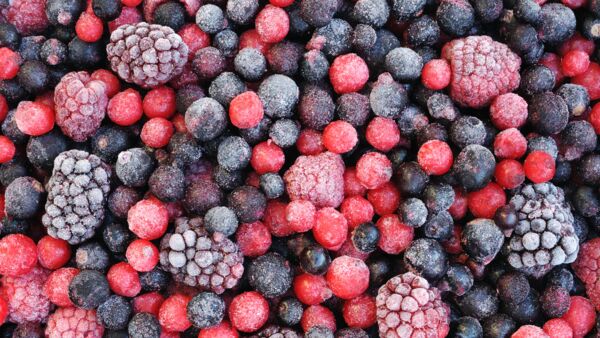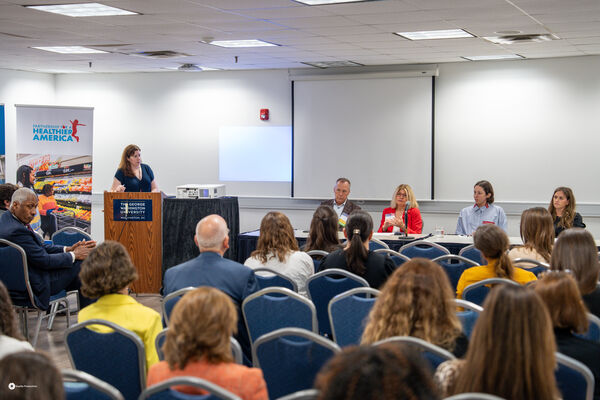Unlocking the Frozen Advantage: How Frozen Produce is Provides a Practical Solution to Food Access

A New Approach to Improving Food Access
At Partnership for a Healthier America (PHA), our mission is simple: to ensure equitable access to nutritious food. We believe everyone in every zip code should be able to find and afford good food—food that is affordable, sustainable, nutritious, high-quality, and culturally connected. Since 2020, our Good Food at Home program has been delivering on this mission, providing fresh produce to nearly 250,000 families in need across 65+ cities, resulting in over 45 million servings of produce delivered.

BERRIES
In doing this work, we’ve learned a major challenge in food access—especially for households with lower incomes—is perishability. When families are on tight budgets and may not have reliable transportation to the grocery store, buying fresh fruits and vegetables can feel risky; too often the food spoils before it can be eaten, leading to waste and lost money.
To address this issue PHA partnered with the American Frozen Food Institute (AFFI) to evaluate the impact of adding frozen fruits and vegetables to Good Food at Home. In the Fall/Winter of 2024, we launched a pilot program in Chicago, Philadelphia, and Baltimore, where families received $80/month to purchase fresh and frozen fruits and vegetables on Instacart.

Alison Bodor, President and CEO of AFFI speaks about the power of frozen foods at PHA’s 2025 Good Food for All Summit
The results are clear: frozen produce is more than a substitute for fresh—it’s a pragmatic, modern, and necessary alternative that improves affordability and reduces food waste while delivering the same nutrition.
The Data Provides Cold, Hard Proof
Our evaluation showed that there’s a clear “frozen advantage”.
1. Addressing Spoilage and Waste
The single biggest benefit participants cited for choosing frozen was simple: it lasts longer. 73% of survey respondents said that the top reason for purchasing frozen produce was that it significantly extends shelf life, helping them reduce food waste and stretch their limited budgets. This gives families who want to have fruits and vegetables on-hand, but are worried about quick expiration dates, another option
2. Affordability and Accessibility
Participants overwhelmingly reported that adding frozen produce to the program allowed them to buy more fruits and vegetables than they could usually afford. Frozen items enhance affordability by allowing families to stock up without concern for immediate use. They’re also highly accessible: 99% of all participants reported having freezer capacity at home to store frozen produce.
3. Building Healthy Habits
The pilot didn’t just provide food—it helped build lasting habits. Data from the three cities showed a strong correlation between the funds provided and healthier eating:
- In Chicago and Baltimore, over 90% and 85% of respondents, respectively, said the program helped their family build a habit of eating more fruits and vegetables.
- In Philadelphia, 71% of survey respondents reported they increased how often they ate fruits and vegetables from before to after the program.
One participant noted, “My son loves fruits a lot and sometimes we cannot afford them with our budget. This helped us a lot, as he was able to try other fruits he never had before”.
4. Adding Variety and Nutrition With the additional option of frozen, families were able to purchase more diverse, nutrient-rich foods.. Popular frozen choices included mixed vegetables (31%) and fruit mixes (29%), alongside staples like broccoli, corn, mango, and pineapple. These purchases contributed to nearly 12,000 servings of produce across the three-month program.
A Future of Good Food for All
The partnership with AFFI and the success of this pilot prove that we must embrace modern, practical solutions to advance nutrition security. Frozen foods offer a powerful blend of nutrition, accessibility and low waste that directly supports the health and financial well-being of families.
Moving forward, PHA will permanently include frozen fruits and vegetables in our Good Food at Home programming. By continuing to innovate and listen to the needs of the families we serve, we are building on what we’ve learned to connect more families year-round with access to high-quality, nutritious, affordable, and delicious food.
This is an important step towards food access, and a clear signal that the path to a healthier America includes the freezer aisle.
For More Information
To learn more about this partnership, you can read PHA’s FY25 Impact Report. You can also find the evaluation results on our Good Food at Home landing page, and a joint press release announcing the results of the frozen pilot study.